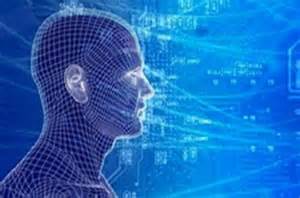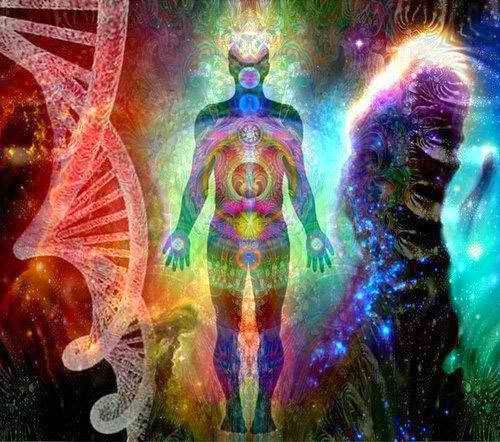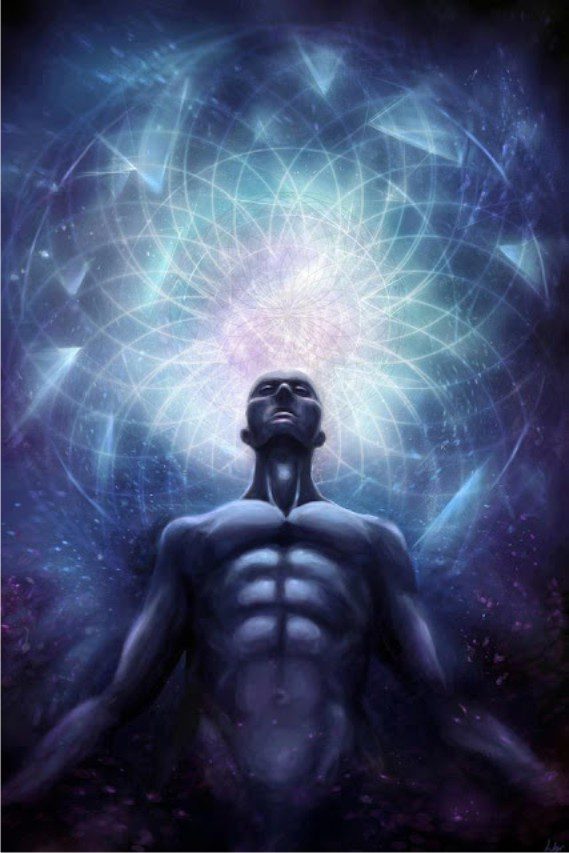Stress is a Reactive Pattern
How We Interpret the Events of Our Life to Create Our Experience
While we know that stress is the underlying cause of most illness and disease, the term stress is typically used in a very vague manner that lacks any real definition. We can only work with something in a deliberate and intentional manner when we understand it and can relate to how it applies to not only our physical health, but also our mental and emotional well-being. We can start by first identifying objective forms of stress from subjective forms. We have to recognize stress that’s outwardly or environmentally produced and beyond our control, as opposed to stress that’s produced inwardly by our own thoughts, emotions, and how we imagine things.
Outward stress naturally caused by environmental conditions, while they elicit an inward response necessary to maneuver or survive them through the fight or flight response that’s more of an instinctual and automatic reaction, that’s not produced by our thoughts, but exists as a real threat or actual physical danger, subsides automatically as soon as the conditions change or the threat of danger has passed, and we naturally return to a relaxed state. Inward stress is what happens when that same physical response is produced by our own thoughts and ways of perceiving the world. This kind of stress is more of a conditioned response as a habitual way of interpreting our experience that perceives them as threatening, dangerous, painful, warranting possible loss, or as just plain overwhelming.
We literally stress ourselves out by how we physically react to our own thoughts. We interpret the events of our life in such a way that it produces fear of some kind, which evokes an emotional reaction to our thinking (or vice versa), and our emotional state is the experience of our endocrine system producing hormones that prepare our body to react to perceived danger through the fight or flight response, which is usually translated into an over-reaction as an exaggeration that either forms aggressive, and attacking behavior, or cause a person to turn inward and internalize things, ultimately shutting themselves off from the outside world and isolating themselves as a means of coping. It tends to produce extremes of one form or another.
By examining how we experience different emotions, we can realize that fear and the onslaught of negative emotions that stem from it are felt in the body as contractions that form tension that causes an anxious feeling that also forms our state-of-mind or how we feel. This state of mind then becomes the filtering mechanism for interpreting and transforming all our experiences through that state, making them stressful also, just by how we present them to ourselves and how we think about them. When we feel fear a lot, or our conditioned mind-set is constructed largely of negative memories born out of stressful experiences, we keep our body in a constant stimulated state based on our own perceptions that we’ve been conditioned to that form the basis for how we experience the events of our life.
It’s easy to see that people that are overly-emotional, meaning they’re always outwardly expressing strong emotions of some kind, are also very stressful to be around. This is because whatever emotion one person is experiencing and projecting, as behaviors that express that emotional state, stimulates those same emotions in everyone they come into contact with, causing them to take on the same emotional state and produce very similar behaviors by how they interact. Emotions are what connect us to others and our environment. A person that’s stressed out tends to stress everyone that’s around them out also. An angry person infects everyone around them with anger, and their interaction becomes one that intensifies and escalates the feeling of anger in both, propagating it, shaping their expression to the dynamic being acted out, and strengthening it in both people.
Negative emotions are so much more impacting than positive ones because they stimulate a whole series of biological processes in the body in response to them, which are then associated to the perception of those emotions, connecting them to ways of thinking and behaving that form tension in the body that can be hard to shake, even when what caused the fear initially subsides. Positive emotions have the opposite effect, and produce a relaxed and free feeling in the body, returning it to a positive and balanced state. The stress that’s held in the body from negative emotions, can become habitual ways of perceiving the world, and are lived out of as a normal disposition, form a vast array of health problems directly associated to the fight or flight response that produce distinct physical properties that alter the regulation of the body and how it functions. The number one disease that it produces as a direct and identifiable correlation is heart and vascular disease, as well as numerous digestive issues, autoimmune disorders, muscle and joint pain, chronic migraine headaches, chronic depression, fatigue, and various forms of mental dementia (deterioration).
The body is always responding to and being regulated by the mind in terms of how we tend to think, what we focus on, what we tell ourselves about what we focus on, and the emotional reaction to our own thoughts that release hormones in the body that alter our state to match the nature of the internal representations we’re producing in our imagination that produce and regulate biological processes that prepare the body for the reality of the thoughts as an actual outer condition. By way of this mental and emotional process, we’re always using our mind to reformulate our body as the physical equivalent of our thoughts. Our thoughts and emotions are always connected, and our emotions are either produced as a natural reaction to our thoughts, or our thoughts are produced by our emotions, both of which combine to form a kind of memory. Whatever idea that corresponds to a memory we have that’s being acted out around us, stimulates that memory in us through association, and determines what we think and how we feel. We’re always either drawing ideas into us as universal memory (not personal in nature) that stimulate a natural chain reaction of thought, emotion, feeling sensation, and behaviors, or, we’re using memory stored in the body from our conditioning that produces an automatic emotional state. Our emotional state determines what we focus on and what meaning we give it that shapes it into an internal representation as our inner reality that shapes our outer reality as a correlation.
This basic formula which operates according to natural laws, is identifying the mind-body relationship by recognizing that stress, caused by the mind is the underlying cause of most health conditions. The only way to alter the conditions of the body is to alter the conditions of the mind, which is producing it subconsciously. Because the greater part of this process is operating all the time just below our level of awareness, meaning, we don’t really have an awareness of why we tend to think and feel the way we do because it’s so automatic and natural, we are creating our physical health by way of it without actually realizing it, and so we often don’t make the connection.
The easiest way to work with this natural process to change how it manifests is by working with the subconscious aspect of the mind which is also the aspect of the mind that operates and exists as the body itself. It’s through this aspect of the mind that we can access and work directly with memory and the emotional, imaginary or visual mental impressions that are actually the key component that contain all other aspects of the equation as the overall idea or pattern of the memory being expressed and therefore used to create. By transforming memories held in the subconscious mind, we can change how we feel, what ideas we run through our mind as a form of natural thinking, and how we create our experiences as a result.
Memories are what we use to propagate realities that become more memories of the same idea or theme that we used to create them. Whatever memories we use to create our present experiences, form a theme that’s used to form fractal patterns as offspring that are of the same nature and hold true to the same basic idea. All outward growth comes by way of the inward reformulation of the same basic group of components by how we apply and adapt them to the present to create a new variation as a modified version, tweaked only by how we apply it. Each time we recall a memory from the past, we modify it slightly as an adjustment to our current level of maturity, and by how we lay it over our current situation, and use it as the means of interpreting our current situation to mean the same thing as the past situation. This act alone upgrades and modifies the memory making it appropriate for creating in the present. As we integrate the present into the past, we grow and evolve the past by way of the present, which sets the basis for the future. We grow in our life based on how we act to transform the memories that we are comprised of through a constant form of adaptation that incorporates new elements or aspects of the present into the past, reformulating it into a variation of itself that’s applicable and meaningful in the present.
Memory, which also makes up the universal mind (archetypes), the soul, and the DNA of the physical body, combine through correspondences as being of the same frequency as a pattern (memory) for producing reality, and adapt and adjust to each other through resonance, forming a modified pattern that combine elements from both to form a new memory that evolves both at the same time. This new memory of the soul, and the heredity of the body, continue to evolve together through the experiences they create that become the memory of this lifetime as their natural offspring produced by how they interact and enter into relationship with everything around them, using the newly acquired elements to evolve and modify the primary memory into new versions of itself that exist in the present in a logical and appropriate manner.
This process of two beings comprised of a whole series of similar memories combining and intermixing their memories to form a new whole (patterning) then consistently absorb and mix with the elements around them that they restructure into the same basic patterns as the memory of the individual, upgrading and transforming their combined memory into new wholes (combinations) of the same frequency, is the basis of all life and how everything is in a dynamic form of growth by evolving its coagulated memory into new forms by how it absorbs, assimilates, and utilizes memory around it that’s similar to it and can be readily incorporated in a congruent and logical manner to tell the same type of story, creating the same type of experiences over and over. This is represented by the trinity, or the idea of parents that birth offspring that’s a combination of both parents to form a new whole as a unique individual.
Through this series of laws, the theme that first forms in our life through our conditioning, which is the formulation of combined memory from our soul and body to form new memory that’s used as our primary perceptual lens to interpret the events of our life, forming what we think of as our childhood experiences, become the memory of our formative conditioning that is used to interpret all our experiences of our life giving them the same basic meaning and recreating the same basic type of experiences throughout our life. The summation of the past up to this point forms the basis for how we interact with the present. We only perceive and take in around us what’s of the same nature as we are, which means, it’s of the same frequency as a theme, and can be readily interpreted by our theme as our perceptual lens (accumulated and synthesized memory) to form new experiences that are of the same type as the past. This is the law demonstrated by the Fibonacci sequence as the law governing reproduction as self-regeneration.
So all we’re ever really capable at any moment of perceiving is whatever exists around us that’s similar to, congruent with, or within the same vibratory range as we are. It’s of a similar idea, and can therefore be recognized and understood. Whatever is considerably different and can’t be explained, fit into our story, or understood using our paradigm, we fail to perceive in a cognitive fashion. This doesn’t mean it doesn’t exist in the broader sense, it simply means we don’t recognize or relate to it, and therefore don’t see it. We don’t use it to form a modification of a basic idea that we hold about things by fitting it into our story.
What we call stress (outside of actual danger) comes by how we interpret events of our life, situations and behaviors by telling ourselves a story about them that make them mean something by how we present them to ourselves. We form ideas into an internal representation as a way of making sense of them by way of our mental paradigm, that give them meaning through the emotion they elicit in us, and we live out of this emotional representation as if it’s real and therefore true. We don’t realize that it only has the meaning we give it. We don’t realize that other people behave the way they do not because they have the same mental paradigm as we do, but because they’ve got their own story going on in their head, that may or may not even resemble ours.
So while we interpret their behavior to mean what we think it means, without ever seeking to understand them by understanding their perspective and reason for doing whatever it is they’re doing, and realizing it didn’t have anything to do with us, but was simply showing us something about them. By realizing this, we can examine how we present things to ourselves, what type of meaning we tend to give things and what story we tell about them that creates our inner experience, and we can begin learning how to tell a different story by consciously working with our own memory base. By transforming our memories in a deliberate fashion, we can change how we perceive and interpret things. By changing our way of perceiving, we simultaneously change our physical responses and what emotions we tend to embody and live out of as a correspondence to our thoughts.
By identifying how we produce our physical condition through our thoughts and emotions, we simultaneously find the key for transforming our physical condition by transforming our mental paradigm. When we change how we think and what emotions we experience in response to our thoughts, we change how our body also responds to our thoughts. By learning how to intentionally keep our body in a relaxed state we can regulate our emotional state. Emotions produce matching physiology, and negative emotions create tension in the body. By simply preventing tension from forming in our body, we can control our emotions in an objective manner. By controlling our emotions we can simultaneously control our thoughts. Thought and emotion are always paired and form a combination that produces a physical manifestation in the body. Change or work with any one aspect – thought, emotion, and physiology – and you automatically change the other two as a correspondence. Negative or excited emotions always form tension in the body. Regulate the tension through relaxation techniques, and you prevent negative emotions that cause stressful thoughts from ever taking hold.
Likewise, a relaxed body naturally produces positive emotions. Not only does it feel good to relax, but the experience of positive emotions (especially love, beauty and reverence) naturally acts to relax the body as its physical equivalent. So by engaging in practices that naturally produce positive emotions, things that we love doing that also feel good, we simultaneously produce positive thoughts, a relaxed and healthy body, and improve how we experience life. In this way, we begin accumulating positive memories that transform our mental paradigm to be able to consistently and naturally produce more health promoting experiences and increase our enjoyment of life and deep sense of inner peace.
Transpersonal Psychologist, Personal Transformation Coach, and Spiritual Teacher






